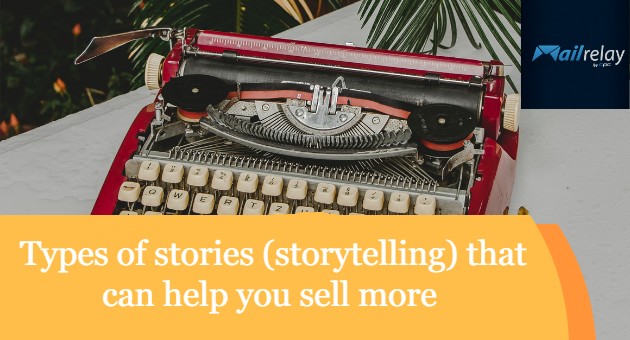
Stories can hold our attention and the reader’s interest, and therefore, they can help you close a deal with a reluctant customer. Some of them.
However, other narratives don’t have the same effect.
Which stories can help you sell more with your emails or landing pages?
That is what we will see and analyze in this article.
These structures that we are going to comment on are perfectly copyable, so you could use them if you’re interested.
Let’s get started?
- 1 · Storytelling for increasing sales, examples, and variants
- 2 · Do the stories have to be real?
- 3 · Do you need to use more complex stories?
- 4 · Where can you apply stories in your sales process?
- 5 · In short
· Storytelling for increasing sales, examples, and variants
► A customer comment
Perhaps one of the easiest ways to tell a story is using a customer review; however, it should be brief.
The requirement for using this strategy would be:
◆ Get a recommendation from a customer or manually generate one (this should only be done very carefully as it could cause problems).
◆ That somehow includes the usual customer problem that our product or service solves
◆ It will be necessary to show the steps that the client must follow to transform the problem into a solution.
One of the advantages of this strategy, if it is natural, is that the lead can see their situation reflected in the other person’s.
And this other person has the same problems.
And that you could give them a solution.
In short, you are offering a solution that has already been tested by others with the same problems.
Here’s an example of this type of story:
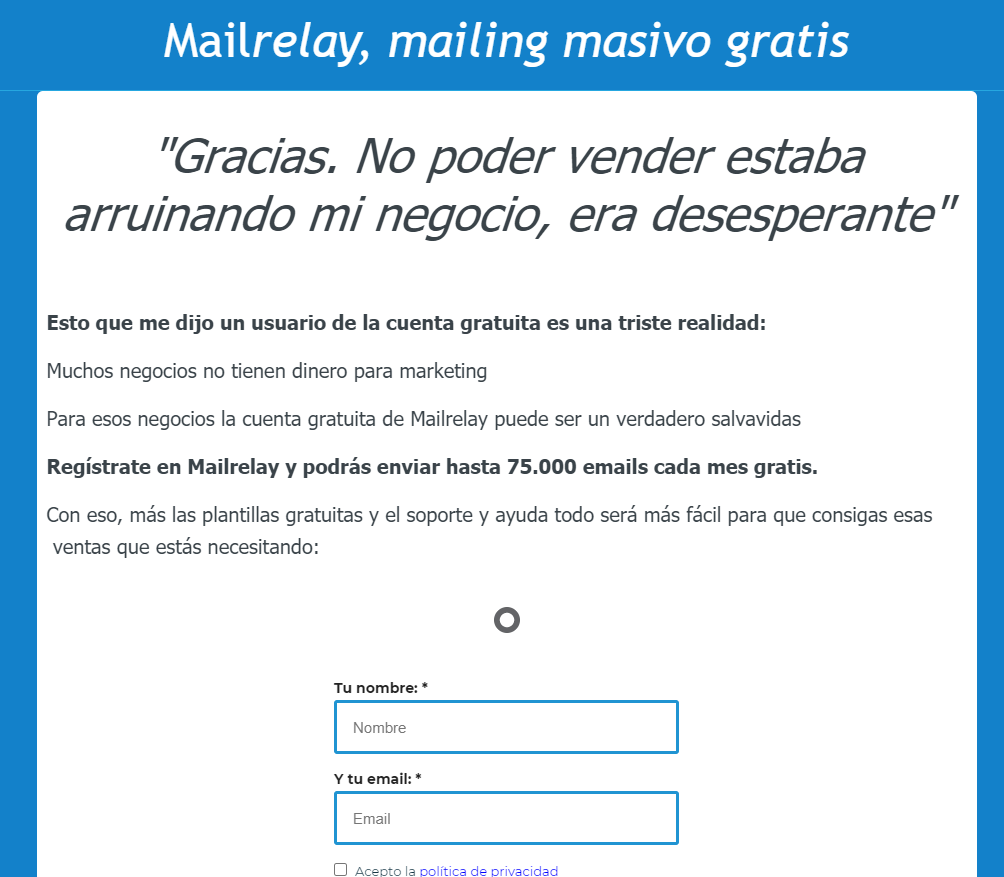
Although in another language, it is an opinion of a few lines:
◆ “Thank you. Not being able to sell was ruining my business; I was desperate.”
Here, both the customer’s problem (they can’t sell) and the solution reached (they are thanking us) as what was happening to them at a personal level (you can see they were desperate).
It’s hard to express more with less text.
But we could add even more elements to this option.
► A brief history of the customer issue, plus comments
This kind of story, if told well, connects very quickly with the reader, arousing their interest and empathy.
The keys are:
◆ Get their attention right away
◆ Tell a story that presents a family situation or problem for the customer
◆ Show a solution that poses the lowest possible risk
◆ Insisting on the action, they should take
It seems difficult?
It’s not so much; the only key requirement you need is to know your target customer.
Let’s see an example:
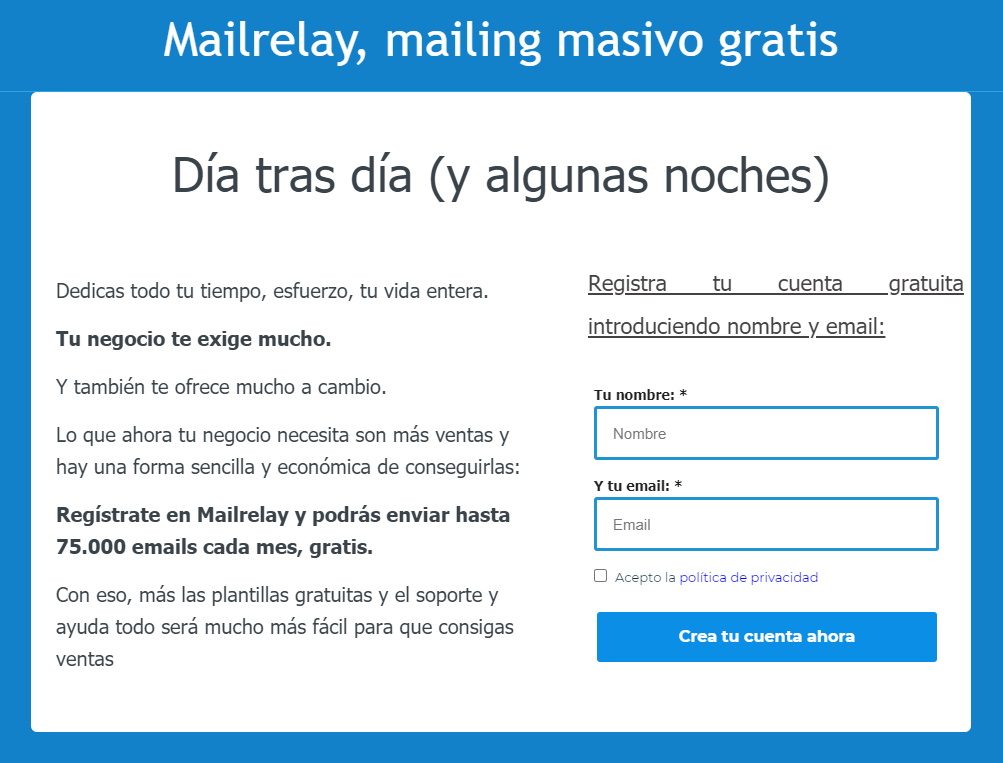
The first few sentences serve to grab the reader’s attention: “Day after day (and some nights)”
The first few sentences serve to grab the reader’s attention:
“Day after day (and some nights)”
“You dedicate all your time, effort, your whole life.”
“Your business demands a lot from you.”
“And it also offers a lot in return.”
This part, in my opinion, is very easy to connect with any person who once managed their own business; after all What entrepreneur has not dedicated all available hours trying to manage their project?
Thus, this brief text presents a situation that will be familiar to the reader.
It’s even something they can be proud of.
It is, therefore, a text that manages to create empathy with the reader, establishing a basis on which there is some mutual agreement.
To then fully enter the second part. in the same way, every businessperson knows that what they need most are sales, at least if they want to keep the business open.
Therefore, we can talk about sales:
What your business needs right now is more sales, and there is a simpleand cheap option to increase the number of new customers:
Create a Mailrelay account, and you can send up to 80,000 emails per month for free.
With this, in addition to free templates and technical support, it will be easier to increase your sales.
At this point we offer a solution to their problem and limit the objections the lead might have.
Now we need only the last step, the call to action, where we insist that the customer should register now.
► The length of the story will depend on several factors.
Perhaps the most important ones are:
◆ The type of product
◆ Or the price
In short, the more complex the purchase decision, the more difficult the process will be. Therefore, we would need a more extensive sales text.
Above, in the example, we are promoting a free bulk mailing service, so a small text is enough.
With these kinds of stories related to product development, we can also seek to attract the customer’s empathy, although perhaps it is more interesting to demonstrate authority.
In other words, it’s an excellent place to show the ways our product can solve their problem.
Let’s look at a simple example:
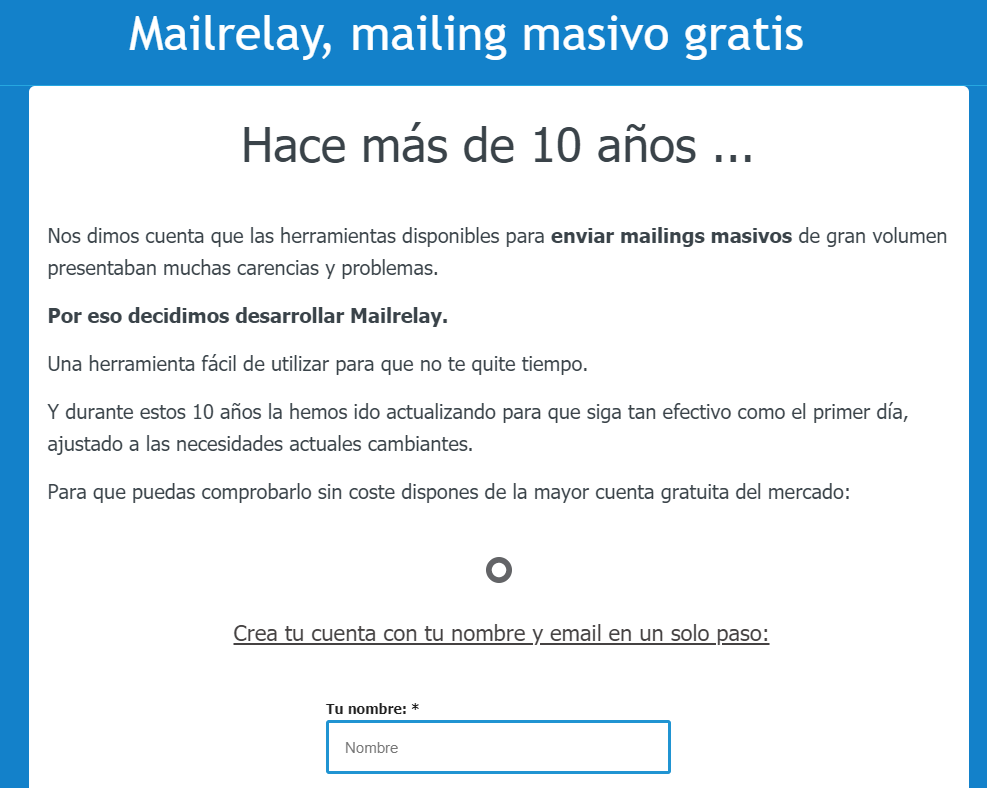
In this example, we are demonstrating authority in the industry. Without saying directly that it is the best bulk mailing service, we make it clear that the company has been in the market for over 10 years.
The idea of this campaign is to show the advantages of the tool and talk about two needs that the customer could be facing:
◆ We explain that it is an easy-to-use tool
◆ It doesn’t take a long time to start using it
To give credibility to the whole set, we invite the lead to create a free account, which means that testing the tool will be relatively inexpensive.
► Link the advantages of the product with the benefits the customer will find relevant
You should connect these two factors.
It shouldn’t be simply a “we did it, and it’s the best option you will find”.
In the end, what matters most to the customer is what they will get, why the product will be useful to them.
► History with a negative beginning
This is another type of story that is also quite useful.
The goal is to draw attention unusually, something that can be useful in markets saturated with competitors when we have to try to find some way to stand out. If we don’t do that, we will go unnoticed.
But you need to be careful with this kind of strategy, don’t overdo it; I’ll share an example with you in the next few paragraphs.
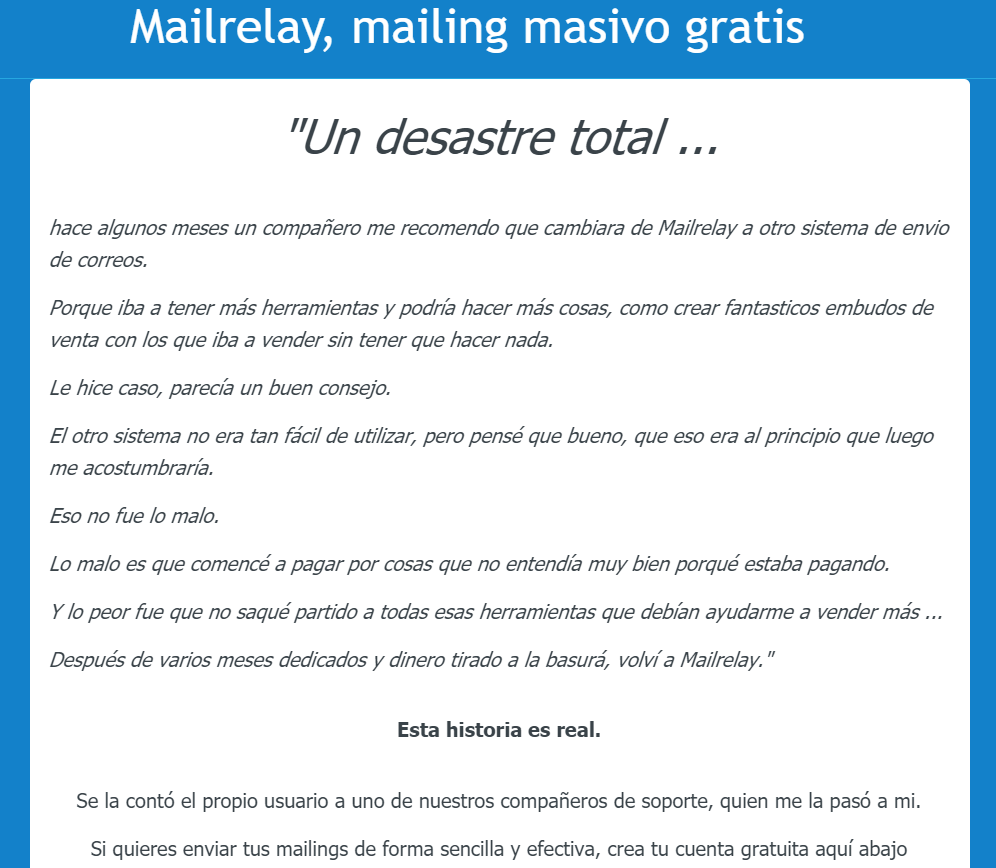
This is an inverted story.
It is a story in which the customer already had access to the solution, but for one reason or another, they stopped using it. From that moment on, we will show the difficulties the customer encountered when migrating to another system and how in the end, they decided to use the original solution to their problem again.
As you can see, it’s a way of reversing the usual story.
If we normally start a story with a customer who has a difficulty and wants to solve it; in this case, we start with someone who already had the solution, but when they abandoned it, they started to face several problems.
Until they decided to come back.
These are two different ways to get to the same place.
As the example is in another language, we will explain the idea so that you can understand what we mean:
a complete disaster
A few months ago, a colleague told me that I should switch from Mailrelay to another email delivery system.
Because I would have more tools and I could do more things like create fantastic sales funnels that would help me to sell without any manual work.
I decided to listen to him; it sounded like good advice.
The other system wasn’t as easy to use, but I thought, well, this is normal at first, but in the end, I will get used to it.
That wasn’t the worst.
What’s worse is that I started paying for things I didn’t understand very well how to use; I was trying to figure out why I should pay for them.
And the worst part is that I didn’t take advantage of all those tools that were supposed to help me sell more.
After several months of work and wasted money, I returned to Mailrelay.
This story is true.
The user himself told to one of our support colleagues, who forwarded his statement to me.
If you want to send a bulk mailing campaign in just a few clicks, create your account below
This way of using storytelling is less common and can be a very interesting differential.

· Do the stories have to be real?
On this aspect, I think we can find diverging opinions.
Mine is that it doesn’t really matter as long as they are “realistic” and that they are perceived as such.
If we take the examples discussed in the article, they are all based on real circumstances. They don’t display the conversations to the word with customers, but what was said.
This helps them to be perceived as accurate, of course.
However, they don’t have to be “based on real events.”
· Do you need to use more complex stories?
The stories we saw in the examples are very simple and brief, and there is nothing wrong with that because they are adequate for their purpose.
In other circumstances, you may need longer stories to describe more complex events.
You will quickly notice this because you will realize that there is more things to tell, that you need to talk more about the difficulties, show more perks. In any case, it’s something you can identify in specific situations.
And on the other hand, adding for the sake of adding is useless; the best thing is to get where you want with as little as possible to avoid mistakes.
After all, these are stories to sell, not narratives written to entertain readers.
Therefore, all elements of the story must be focused on getting more sales.
· Where can you apply stories in your sales process?
Anywhere!
The examples I’ve shown are from sales pages, although they are perfectly transferable to an email campaign, there is no difference.
For some types of ads, they would need to be shorter but still this could also be a valid format.
In general, they are applicable in any format.
· In short
Storytelling helps us create unique sales texts, different from what the customer may find on similar products.
They also serve to maintain the customer’s interest while convey all the important points of the message.
And, of course, they present a form of persuasion (or manipulation) which is very effective for marketing campaigns.
The examples I shared with you in this article were all used with great effectiveness, so you can safely draw inspiration from them.
I hope they will be useful for you!
Translated by Micheli.